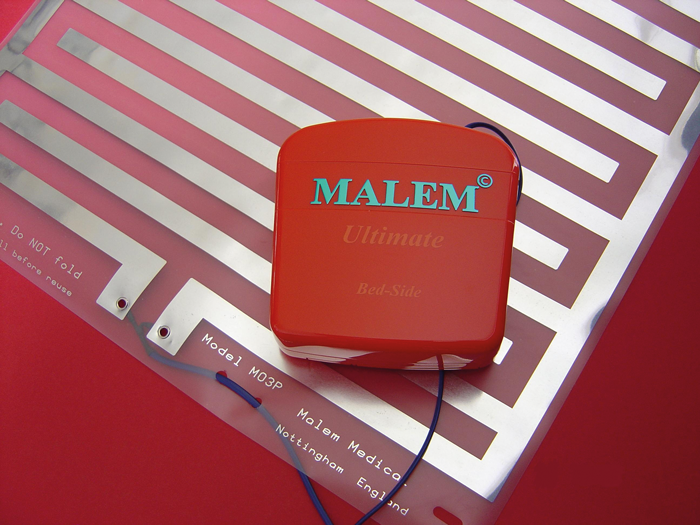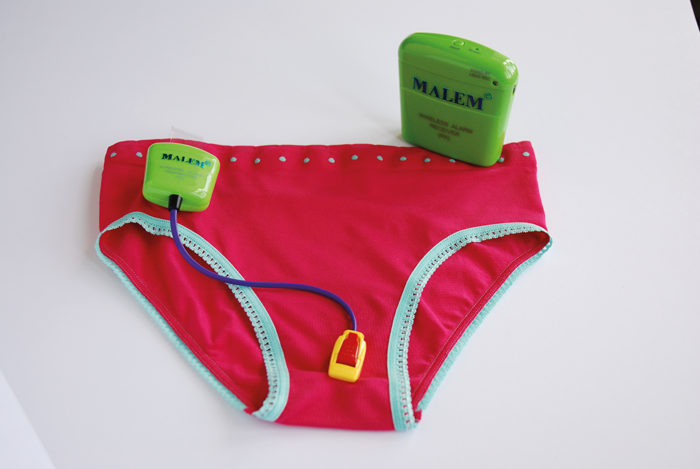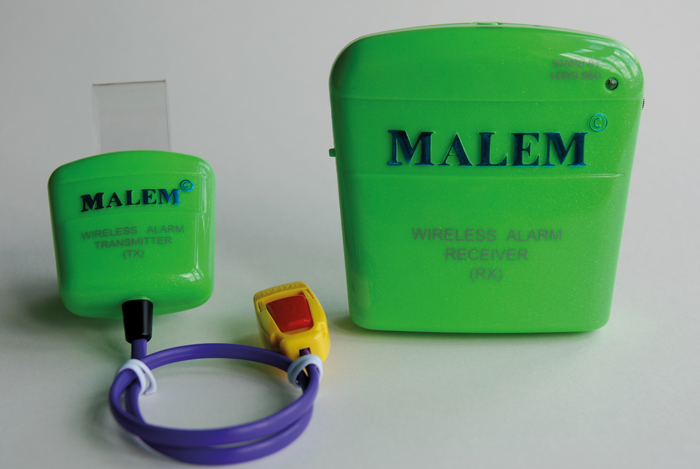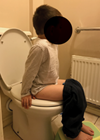Introduction
Nocturnal enuresis is the complaint of bedwetting. The 2010 National Institute for Health & Care Excellence (NICE) guidelines define bedwetting as the “involuntary wetting during sleep without any inherent suggestion of frequency of bedwetting or pathophysiology” [1].
Bedwetting is sometimes trivialised with children and their parents or carers being told they will “grow out of it”. It is true that the prevalence of bedwetting does decrease with age from an overall prevalence of 30% at 4.5 years to 9.5% at 9.5 years [2]. Previously, children were only considered to require treatment for bedwetting if it persisted beyond the age of seven, however the current NICE guideline does not specify a minimum age for treatment. Although the guideline comments that a child would generally be expected to be dry by a developmental age of five, specific advice for children under the age of five is provided along with treatment options for those aged five to seven [1].
This change reflects the understanding that bedwetting can be very distressing for a child or young person and can result in them avoiding or withdrawing from social activities such as sleepovers or school trips. There is even some evidence to suggest that children who wet the bed are at greater risk of child abuse [3]. NICE advises that child maltreatment should be considered as a contributory factor if a child has secondary day or night-time wetting that persists despite adequate assessment and management unless there is a medical explanation (such as a urinary tract infection) or a clearly identified stressful situation that is not part of maltreatment (such as bereavement or parental separation) [4].
“It is essential that no punitive measures or action is taken against the child as the bedwetting is not under the child’s control and any punitive measures may further lower the child’s confidence and self-esteem.”
Bedwetting can put a strain on parents or carers with increased laundry and other associated stresses. NICE has listed as a key priority for implementation that healthcare professionals “discuss with parents or carers whether they need support, particularly if they are having difficulty coping with the burden of bedwetting or if they are expressing anger, negativity and blame towards the child or young person.” ERIC is a UK based charity dedicated to children’s bladder and bowel health. In my practice, I recommend to parents or carers that they look at the ERIC website (www.eric.org.uk) for advice and support on managing their child’s wetting. ERIC also offers a helpline available by phone or email for young people, their parents or carers.
There are a number of factors which can contribute to bedwetting. These can be considered as:
- Factors which contribute to sleep and arousal patterns.
- Factors which contribute to polyuria.
- Factors which contribute to bladder dysfunction.
It is essential to help the child and his / her parents or carers understand that bedwetting is not the child’s fault, that it is an entirely involuntary process. As Feldman puts it, “emotional and behavioural problems are not causative factors, although they may influence treatment outcome” [5].
Assessment
Family history is significant as often children who wet the bed will have a parent or other family member who was a bedwetter [5]. Genome research has identified a gene on chromosome 13q linked to enuresis [6].
Although this article focuses on those children with monosymptomatic nocturnal enuresis it is essential to know if there are any daytime urinary symptoms. The assessment of daytime symptoms will directly influence management by indicating if the child has an appropriate functional bladder capacity for their age. Expected bladder capacity (in ml) in a child may be calculated by the formula (age in years + 1) x 30. A bladder diary is ideally completed over three days, to include both school and non-school days. A bladder diary can show patterns of daytime voiding, frequency and any daytime wetting. Drinks (volume and type) are recorded along with micturations. The total volume of fluid intake should be assessed to identify if polydipsia is contributing to the wetting.
The pattern of micturition can help to identify the underlying cause of the bedwetting. Frequent small voids are suggestive that the child has not trained his / her bladder to hold the expected amount and this may contribute to the bedwetting. The proportion of the total urine produced over the eight hours of sleep should also be assessed. In young people the International Continence Society defines nocturnal polyuria as more than 20% of urine produced overnight (compared to more that 33% in the elderly). Questions that are relevant in the history are:
- Has the bedwetting started very recently (days to weeks)?
- If so consider if this could be a symptom or sign of systemic illness. - Has the child previously been dry for six months or more?
- Bedwetting in a child or young person who has previously been dry at night for six months or more is defined as secondary bedwetting.
- In secondary bedwetting consider if there could be any emotional, physical or medical triggers for the change. - What is the pattern of bedwetting?
- How many nights per week?
- How many times per night?
- Is there a large amount of urine or just a dribble?
- At what time(s) of night does the wetting occur?
- Does the child or young person wake up after bedwetting? - Ask about daytime symptoms:
- Frequency (> seven / day) or infrequent voids (< four / day).
- Urgency and daytime wetting.
- Abdominal straining to void.
- Poor flow.
- Pain passing urine.
- Avoidance of toilets. - Ask about fluid intake:
- Does the child or young person (or their parents or carers) fluid restrict?
- Is the fluid intake excessive?
- What type of fluids are consumed (any bladder irritants)?
- A bladder diary may be helpful in the assessment of fluid intake, daytime voiding and bedwetting. - Is the child constipated or have any faecal soiling?
- If soiling or constipation is severe refer to NICE guideline CG99 [7]. - Is there any developmental delay, learning difficulties or attention difficulties?
- Is the child or young person diabetic?
NICE advises against routine urinalysis in children or young people with bedwetting unless:
- Bedwetting has started in the last few days or weeks.
- There are associated daytime symptoms.
- There are signs of ill health.
- The history, symptoms or signs are suggestive of urinary tract infection.
- There is a history of, or symptoms or signs suggestive of diabetes mellitus.
Common causes of nocturnal enuresis
Physical causes
- Constipation, deep sleeper, snoring / sleep apnoea, excess fluid intake / consumption of bladder irritants before bed.
Emotional causes
- Any major change in the child’s life that may result in anxiety or stress. Examples may include starting or changing school, a new sibling, exams or bereavement. In some cases a child may wake with a sensation of a full bladder but not go to the bathroom as he / she is afraid of the dark.
Medical causes
- UTI, type I diabetes mellitus, diabetes insipidus, overactive bladder.
Management
Lifestyle modifications
It is essential that no punitive measures or action is taken against the child [1] as the bedwetting is not under the child’s control and any punitive measures may further lower the child’s confidence and self-esteem. Reward systems may be helpful if used appropriately. A star chart for dry nights is pointless as the child cannot control this (and the lack of stars may even feel punitive and therefore be counterproductive). However, a star chart rewarding positive behaviour (such as drinking recommended amounts through the day or helping to change wet sheets) can be helpful [1].
Lifestyle modification by correcting an excessive or inadequate fluid intake and avoiding bladder irritants can be helpful. Try to help the child or young person and his / her parents or carers to understand that the aim is to get the bladder used to filling to its expected capacity and then emptying. This will help the bladder to hold more urine overnight and so reduce the bedwetting. Establishing a regular toilet habit during the day (generally a child should need to void four to seven times per day) will also help to stop the bedwetting.
There is no evidence that waking or lifting a child or young person (where a parent or carer wakes the child or young person to take them to the toilet or carries a not-fully awake child or young person to the toilet, usually just before the parents or carers are going to bed) helps to achieve long-term dryness. NICE therefore advises against the use of lifting and waking unless as a practical measure in the short-term management of bedwetting.
Alarms
Following lifestyle modification and optimisation of fluid intake and toileting behaviour, a bedwetting alarm is generally recommended as first-line treatment [1]. An enuresis alarm is also recommended as first-line by the BNF for Children [8]. Alarms have a lower relapse rate than medication when discontinued. However, the family will need to learn how to use the alarm and successful use of the alarm needs commitment from the family. The family should also be informed that it may take several weeks before an improvement is seen as the child or young person needs to learn to recognise the sensation of a full bladder and then learn to wake in response to this sensation. There are a number of different alarm types available (Figure 1). Some alarms use a detector that clips onto underwear or pyjamas, others use a detector mat between the mattress and the bed sheet. Wireless alarms are also available. Alarms may have an auditory signal, light signal or vibrate or a combination of these.



Figure 1: A selection of the different types of bedwetting alarms available from Malem Medical.
The BNF for Children and NICE both recommend that an alarm should be trialled for four weeks initially [1,8]. At this point, assess for signs of response. Signs of response may include smaller wet patches, waking to the alarm, the alarm going off later or fewer times per night, as well as fewer wet nights. If there are early signs of improvement continue the use of the alarm until at least two weeks of dry nights have been achieved. If at three months of use complete dryness has not been achieved, continue with the alarm alone only if the child or young person remains well motivated to use the alarm and there has been and continues to be improvement.
However, it is recognised that an alarm is not appropriate in all cases. Some young people or parents / carers may simply not view an alarm as a desirable treatment. In other cases an alarm may be inappropriate if the bedwetting is “very infrequent” (NICE define this as less than one to two wet beds per week [1]). An alarm would also be inappropriate if the parents or carers were having emotional difficulty coping with the burden of bedwetting or expressing anger, negativity or blame towards the child or young person.
Pharmacological treatment
The mainstay of pharmacological treatment for nocturnal enuresis is desmopressin, which may be used alone or in combination with a bedwetting alarm. Desmopressin is available in a number of different formulations. Oral and sublingual preparations are licensed for the treatment of primary nocturnal enuresis [8]. Desmopressin is also available as a nasal spray, however this is contraindicated for nocturnal enuresis as there is a higher incidence of adverse effects, particularly hyponatremic seizures, than with the other preparations [9].
NICE consider the use of desmopressin to be appropriate in children and young people over the age of seven years if rapid and / or short-term improvement in bedwetting is the priority (for example before a school trip) or if an alarm is inappropriate (see above) [1]. NICE advise that the child or young person should be started on the lowest dose of desmopressin (dosage depends on the formulation, see BNF for Children or NICE guidance for details of dosing) and the dose increased if necessary after one to two weeks [1].
It is important that if medication is prescribed that there are regular medication reviews. NICE recommends assessing the response to treatment after four weeks and if there are signs of a response continue treatment for three months. If there are no signs of response at four weeks, NICE advises stopping the medication [1]. I believe that four weeks is too early to assess an adequate response and in my practice I follow the advice in the BNF for Children [8]. This recommends that treatment with desmopressin be reassessed after a period of three months by withdrawing treatment for at least one week in order to assess if the medication is still needed. Repeated three-month courses may be given. Although in adults, monitoring of serum sodium levels is recommended when commencing desmopression, this is not considered essential in children (who may find the process of phlebotomy distressing). The BNF for Children recommends monitoring of blood pressure and weight whilst on desmopressin in order to identify fluid overload, although no interval for this monitoring is given.
Although NICE suggests the use of desmopressin in children over the age of seven, the BNF for Children considers that treatment may be started in children over the age of five years, depending on their maturity and the needs of the child and their family.
However, caution must be exercised when prescribing desmopressin due to the risk of hyponatremia and hyponatremic convulsions. The child or young person must be appropriately counselled about precautions to take whilst on this medication. The child or young person and his / her parents or carers must be warned to avoid fluid overload (generally the advice is not to have anything to drink for one hour before and eight hours after taking the medication). Notwithstanding this advice, the child or young person must also be encouraged to drink an adequate amount during the day in order that the bladder gets into healthy habits of filling and emptying. In addition parents and carers (and the child or young person if they are old enough to understand) must be instructed to withhold the use of desmopressin during episodes of vomiting or diarrhoea.
Parents or carers must be informed of the signs of fluid overload, namely: nausea or vomiting, swelling of the face, hands or feet, unusually severe or prolonged headache, drowsiness and unexplained weight gain. Parents or carers must also be informed that there is a rare but potentially serious risk of seizure due to fluid overload and if this occurs the child or young person must be taken to hospital urgently. A very rare side-effect of desmopressin is aggression.
The potential risks of desmopressin came under public scrutiny during the inquest into the death of Samuel Boon [10]. Samuel was 17 when on 17 July 2012 he collapsed and died on a school trip trekking in Morocco. He had a repeat prescription for DesmoMelt which his mother told the inquest he took periodically as “reassurance” despite no longer suffering from bedwetting. It is unclear if he had taken the medication or not prior to his death. The Coroner, Selena Lynch, concluded that the death was due to misadventure, stating that the “cause of Samuel’s death was either exertional heatstroke and / or hyponatremia caused by excessive intake and / or retention of water”. Samuel’s death and subsequent inquest attracted national media coverage, some of which focused on the potential side-effect of his bedwetting medication [11].
NICE advises against the use of an anticholinergic for the treatment of nocturnal enuresis unless there are co-existing daytime symptoms [1]. However, the guideline states that an anticholinergic may be prescribed in combination with desmopressin for nocturnal enuresis that has not responded to desmopressin monotherapy or desmopressin in combination with a bedwetting alarm. A double-blind placebo controlled randomised controlled trial, using an anticholinergic in combination with desmopressin in children with monosymptomatic nocturnal enuresis refractory to the maximal dose of desmopressin, reported a significant reduction in the mean number of wet episodes in the combination group compared with the placebo group [12].
NICE advises against the use of a tricyclic as first-line treatment for bedwetting. If a tricyclic is offered for the treatment of bedwetting, imipramine should be used [1]. However, imipramine should only be considered for nocturnal enuresis in children or young people who have failed to respond to all other treatments and should not be used in combination with an anticholinergic [1]. Imipramine is available as either tablets or syrup and for the treatment of nocturnal enuresis is prescribed as a daily dose at bedtime [1].
The potential risks of overdose with imipramine have long been recognised [13]. The major concerns are of cardiac arrhythmias and seizure but other side-effects include dry mouth, drowsiness, headaches, postural hypotension, blurred vision, constipation, nausea or vomiting, increased appetite and the child or young person may feel tense, nervous or restless [14]. The initial treatment period should be three months [1]. The BNF for Children advises that this initial three-month treatment period should include a gradual withdrawal of the drug [8]. If repeated courses of imipramine are to be used, there should be a review every three months. When stopping imipramine, the drug should be withdrawn gradually to avoid withdrawal symptoms.
NICE advises that if the bedwetting does not respond to the treatments outlined above, a referral should be made for further assessment of bladder function, underlying disease or social and emotional factors [1]. NICE defines an adequate response to treatment as 14 consecutive dry nights or a 90% improvement.
Conclusion
Bedwetting is common, especially in children with a family history. In many cases reassurance and advice on conservative measures will be all that is needed. In more severe or persistent cases an enuresis alarm or medication such as desmopressin may be successfully employed. If an alarm or medication is used it is important to adequately council the child or young person and his / her parents or carers about the risks and benefits of the intervention and to offer regular review.
References
1. National Institute for Health & Care Excellence. NICE Clinical Guideline (CG111): Bedwetting in under 19s. 2010. www.nice.org.uk/guidance/CG111
2. Butler RJ, Heron J. The prevalence of infrequent bedwetting and nocturnal enuresis in childhood. A large British cohort. Scand J Urol Nephrol 2008;42(3):257-64.
3. Sá CA, Gusmão Paiva AC, de Menezes MC, et al. Increased risk of physical punishment among enuretic children with family history of enuresis. J Urol 2016;195(4 Pt 2):1227-30.
4. National Institute for Health & Care Excellence. NICE Clinical Guideline CG89: Child maltreatment: When to suspect maltreatment in under 18s. 2009.
www.nice.org.uk/guidance/cg89
5. Feldman M. Management of primary nocturnal enuresis. Paediatr Child Health 2005;10(10):611–14.
6. Eiberg H. Nocturnal enuresis is linked to a specific gene. Scand J Urol Nephrol Suppl 1995;173:15–17.
7. National Institute for Health & Care Excellence. NICE Clinical Guideline CG99: Constipation in children and young people: diagnosis and management. 2010.
www.nice.org.uk/guidance/cg99
8. Paediatric Formulary Committee. BNF for Children Sept 2016-2017. London, UK; BMJ Group, Pharmaceutical Press, and RCPCH Publications; 2016.
9. FDA Alert December 2007
www.fda.gov/Drugs/DrugSafety/
PostmarketDrugSafetyinformationfor
PatientsandProviders/ucm125561.htm
10. www.judiciary.gov.uk/wp-content/
uploads/2014/06/Boon-2014-0046.pdf
11. www.bbc.co.uk/news/uk-england-london-25628073
12. Austin PF, Ferguson G, Yan Y, et al. Combination therapy with desmopresin and an anticholinergic medication for nonresponders to desmopressin for monosymptomatic nocturnal enuresis: a randomized, double-blind, placebo-controlled trial. Pediatrics 2008;122(5):1027-32
13. Greene AS, Cromie WJ. Treatment of imipramine overdose in children. Urology 1981;18(3):314-15.
14. Medicines for children.
www.medicinesforchildren.org.uk
TAKE HOME MESSAGE
-
Bedwetting is common.
-
Historically no treatment was considered until the child was seven. Current guidelines accept that children aged five or younger may be offered assessment and advice about bedwetting.
-
Always ask about daytime urinary symptoms and constipation.
-
Conservative management should always be offered as first-line.
-
Enuresis alarms can have a better stay dry rate following discontinuation than medication but are not suitable for everyone.
-
Desmopressin is the mainstay of pharmacological treatment for nocturnal enuresis but requires careful counselling of the child or young person and their parents or carers.






